


Aquatic Weed Control
Aquatic Weed Control Products # 1 in Aquatic Weed Control Services-Call The Weed Harvesting Experts
Swampthing.us all of your needs for AQUATIC SERVICES and Aquatic Weed Control. Let us be your first choice in LAKE WEEDS CONTROL, Aquatic Weed Harvesting, and AQUATIC WEED CONTROL of LAKE WEEDS. Covering Michigan, Ohio, Indiana, Georgia, and KY. We also remove cattails from ponds and lakefronts with our Hydro-rake. Also setting up new programs for the Pennsylvania, Vermont, and New York areas for aquatic weed control and aquatic weed harvesting programs.
Aquatic Weed Harvesting: aquatic weed removal or lake weed removal
Periodic weed harvesting of shoreline areas will in many instances prove to be an effective means of aquatic plant control. The rooted AQUATIC WEEDS must produce sufficient food in their leaves to maintain their root systems. Frequent cuttings of the leaves will eventually lead to the death of the root system. Like weeding the garden, it is necessary to watch for the early development of potential problems and remove the AQUATIC WEEDS as they become established, and before they spread over large areas. It reduces the amount of Biomass on the bottom of the lake, more biomass equals more nutrients for plant growth.
New Immediately American Dredge and Aquatic Weed Control Company are looking for clients with aquatic vegetation problems in Southern states: South Carolina, North Carolina, Georgia, Florida, Tennessee, Mississippi, Louisiana, Arkansas, Texas, etc. If you have an overabundance of lake weeds on your waterway, please email us and tell us of your situation. Do you and your neighbors have a hard time getting your boats in/out of your dock because the aquatic weeds are too thick? Do the lake weeds make it difficult to enjoy fishing, boating, swimming, or the view? Please tell us of your situation, which lake you're on, and if you know of others in your area that have a similar problem.
New for 2020 we are looking for clients with dredging concerns and milfoil, curly leaf pond weed, and other aquatic vegetation problems in Northern states. If you have an overabundance of sediments or lake weeds on your waterway, please email us and tell us of your situation. Do you and your neighbors have a hard time getting your boats in/out of your dock because the aquatic weeds are too thick? Is it too shallow because of too much muck or sediment buildup? Do the lake weeds make it difficult to enjoy fishing, boating, swimming, or the view? Please tell us of your situation, which lake you are on, and if you know of others in your area that have a similar problem.
The more Aquatic Weeds you remove during the spring, summer, and fall, the less AQUATIC WEEDS that will be on your lakefront. The problem with a lot of chemicals, they kill the lake weeds but create biomass on the bottom of the lake, which can create a “Mucky” type bottom. More nutrients can lead to Algae Blooms, and then they have to apply more chemicals. You’re adding mass to the bottom of your lake, losing depth. Aquatic Weed Harvesting can improve your ecosystem on your lake when managed properly. Creating better breeding grounds for fish and wildlife. It is like giving your lakefront a healthy haircut. It is about keeping your lake in balance, keeping it healthy for you and future generations to enjoy. Let us do cattail removal for you.
Mechanical Weed Harvesting can be a very selective method of LAKE weed removal and can be used to only remove a portion of the aquatic plants. The more selective methods can be used to maintain open boat channels through native aquatic plant stands, from docks to open water, without opening the bottom to invasion of non-indigenous species. A lot of Chemicals deteriorate the plant and leave the bottom open for invasive aquatic plant species. Michigan has seen several Aquatic Invasive Species in its lakes. Eurasian Milfoil
Pictures of an Aquatic Weed Harvester removing Aquatic Weeds
Please Read Below Very Important--to the overall health of your Lake, Pond, and Channel:
Alternative to Herbicide use: Lake Associations, HOA, and Lake Boards are you tired of paying for expensive herbicide and/or chemical treatments without good results? How bad are the weeds still after 2 or 3 treatments a year? Do you get a lot of decay, or a mass of floating vegetation that will settle to the lake bottom, and a lot that will wash up onto the resident's shorelines? This is adding to your problem each year providing more nutrients, for weed growth, ruining fish spawning beds, and creating a mucky bottom. Why do think they have warning labels on herbicide treatments, use your common sense. Use alternative methods to herbicides, such as weed harvesting, hydrocracking, and dredging, these are all very healthy alternative methods to herbicide treatment. Think about this for example, Weed harvesting you are cutting the vegetation from the lake, leaving the stem at the bottom (good for fish) and when you remove the bulk of the plant you are instantly opening waterways (not waiting for it to decompose), taking nutrients out of the lake--a healthy balance. But with a herbicide, it can decompose the plants, and add to your future weed growth problem, creating muck and nutrients. Also be very careful, too much-decomposed vegetation in a body of water after a herbicide treatment can and has caused "fish kills", in a lot of states. Especially in a year like this year, you are better off Weed Harvesting and removing the mass of the aquatic vegetation, when you have large amounts of vegetation within the water. Late summer and Fall, are a good time for Aquatic Weed Harvest. Otherwise, if you treat a large amount of vegetation with a herbicide, going into the end of summer, fall, and leading into winter: once the plant starts to decompose it takes valuable oxygen to help the decomposition process, which can take away from the fish/aquatic life. But for example, if you have a lot of vegetation at the end of the summer, or fall (which is coming soon): you are better off Weed Harvesting and removing the mass of the vegetation, rather than allowing it to decompose within your lake, which can be harmful going into the winter months, you don't want to end of with a big fish kill, come spring. Seeing fish all over your shorelines. Call us today and stop using a herbicide treatment, try something eco-friendly. Let us put together a complete eco-friendly program for you. What can it hurt, has your weeds gotten worse, do you now have more sediment/muck, has your budget slowly increased each year, because your current company says the weeds are getting worse, (more nutrients/sediment = more weeds)so you need more chemicals?? We are asking you to try something different, use some common sense, and try our Eco-Friendly approach. Long term you will be helping your lake, the residents that use the lake, and the ecosystem that is affected by your lake. Every inland lake is destined to fill it, don't try to speed up the process. Try our approach, tell us what your current budget is for your aquatic control programs: and we will beat their pricing, in most cases by thousands of dollars. www.swampthing.us
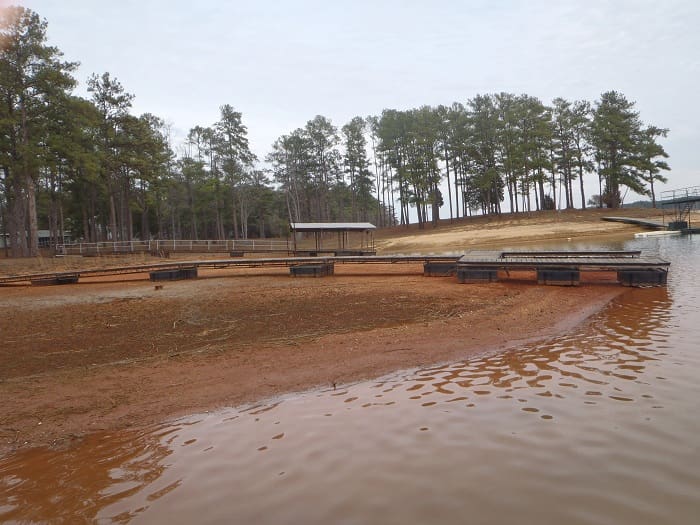
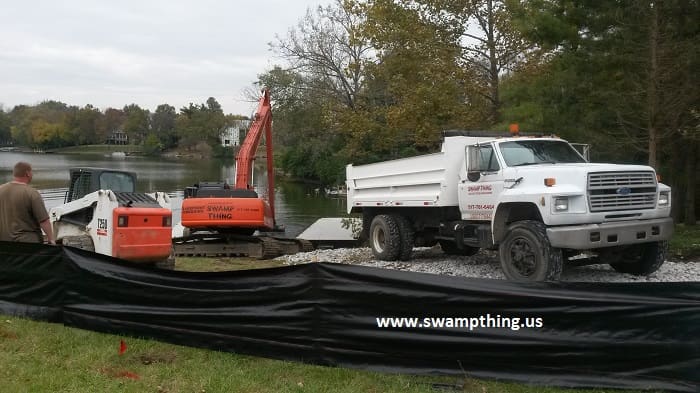

How Do You Say It?
AQUATIC SERVICES, AQUATIC WEED SERVICES, AQUATIC WEED CONTROL, AQUATIC WEEDS REMOVAL, WEED CONTROL, Seaweed removal, AQUATIC WEEDS CONTROL AND REMOVAL, AQUATIC CONTROL, AQUATIC WEEDS, AQUATIC WEED CONTROL MANAGEMENT, AQUATIC WEEDS MANAGEMENT, AQUATIC WEED HARVESTER, WEED HARVESTING, WEED HARVESTER, MECHANICAL WEED HARVESTING, Seaweed Harvesting, AQUATIC WEED RAKE, AQUATIC WEEDS CUTTER, LAKE WEEDS, LAKE WEED, LAKE WEED HARVESTING, LAKE WEED REMOVAL, LAKE WEED CONTROL, LAKE WEED SERVICES, LAKE WEEDS KILLER, ORGANIC WEED KILLER, ORGANIC WEED CONTROL, AQUATIC WEED FABRIC, WEED CONTROL FABRIC OR AQUATIC WEED BARRIER. ANY WAY YOU SAY IT. Swampthing.us can meet all your AQUATIC CONTROL and DREDGING NEEDS! Call Us Today!
Goose Deterrent systems, Keep Geese Away, Get Rid of Geese
Protect your yard, fruit trees, vegetables, flowers, and water features from hungry or destructive animal intruders. These units help deter geese, deer, raccoons, herons, dogs, and more as they approach and repel them.
Keep animals away from your lakefront or garden
- Keeps Property Clear of Goose Droppings!
- Low Cost / Effective Solution
- works day and night without chemicals


Do You Want to Keep Geese Off Your Dock, Swim Raft, or Lawn? Our Customers Have Told Us Over the Decades We Have the Absolute Best Goose, Duck, Seagull, and Critter Deterrent Made.
- New Geese Deterrent--safely prevent, keep off Geese on your shoreline, grass, boat docks, and swimming rafts. There are several products to choose from. The Goose Be Gone TM will allow you to keep geese away, and get rid of geese off your shoreline, sidewalks, swim raft, your lawn. Also, we have been told by clients The Goose Be Gone TM and Redneck Crittor Gettor TM are some of the best products in the world to keep deer out of a garden, keep ducks, geese, seagulls, pelicans, raccoons, squirrels, off or out of areas of a yard. Get rid of geese, ducks, and seagulls off your lawn, or off your green grass (all that nasty goose poop). Pricing for these units is $125, with additional options. Have you tried the rest, now try the best email: [email protected] or 1 (855) 305-0233.
- Keep Geese off your swim platform, or off your swim raft with this unique product is like no other with the Redneck Crittor Gettor TM. Are you tired of all the geese, ducks, seagulls, or pelican poop on your swim raft? Then keep them off your dock or swimming raft with this portable unit. It's amazing goose, seagull, or waterfowl deterrent. Call or email for details, pricing for these units averages $145, depending on the chosen options. Customers have been using it also to keep away the neighbors' cat, or dog - It's a great product! Email us and put your order in today.
Email: [email protected] or 1 (855) 305-0233.
Watershed Management Programs
Proper Weed Control starts with good Watershed Management. We welcome anyone to attend Free Watershed Management Workshops. If you have a large group or a Lake Association, we may hold a workshop specifically for your group. You will have an opportunity to ask questions on how to help improve your Lakes unique ecosystem.
We offer services to help improve your own residential Lakefront, to do your part: LakeScaping, Special Fertilizers for your lawn, Fall leaf fences, and leaf pickup, to name a few.
You influence what happens in your watershed, good or bad, by how you treat the natural resources--the soil, water, air, plants, and animals. What happens in your small watershed also affects the larger watershed downstream. It affects abundant weed growth, poor water quality, or poor health of fish and other wildlife. It can affect your health. There are many things you and your watershed community can do to keep your watershed healthy and productive.
Let Swampthing.us develop an Aquatic Weed Management program for you using Aquatic services and Aquatic weed control methods: Aquatic Weed Harvesting, Lake weed removal with a Hydro-rake, applying a Weed Control Fabric or Weed Barrier Fabric with sand/pea stone, or for serious projects using dredging equipment for dredging a Lake or Dredging a Pond. You can also contact us for Canal Dredging and Channel Dredging projects, contact a dredging company that cares about your pocketbook, Aquatic Weed Control, or Dredging Information call us at
1 (855) 305-0233 or email at [email protected].


Lake Scaping-Organic Weed Control
A combination of properly designed erosion control techniques using native plant materials can provide a stable shoreline in most stream and lake shoreline conditions. In addition to the aesthetic appeal provided by a diverse mix of native species, a naturally stabilized shoreline can provide a habitat for a variety of fish and wildlife species.
- Reduced Erosion and Sedimentation; Native plant buffers reduce soil erosion and sedimentation by holding soil in place with deep-rooted native plants and reducing wave energy.
- Reduce Undesirable Nutrients; o Phosphorus and nitrogen feed aquatic plants and algae. Native plant buffer strips capture and absorb nutrients before they can enter waterways, reducing waterfront nuisance vegetation and algae.
- Deter Geese.; Native plant buffer strips provide a natural deterrent for geese.
Benefits of Native Plant Shoreline Buffers include:
- Enhanced Visual Appeal
- Improved Fish and Wildlife Habitat
- Reduced Maintenance Cost
Plan ahead because certain materials/projects may need a permit reviewed by your local DEQ or DNR.
Fall Clean Up:-Reduce Aquatic Weeds
Our company will install leaf fences and pick up leaves in the fall to prevent the leaves from building up in your canalways and lakefronts. When the leaves accumulate in your lake, that is added nutrients to support thriving weed growth for the next season. Also, this creates added biomass to the lake floor. Your lake is slowly disappearing.
We Install Weed Barriers/Weed Control Fabric and Prevention:
The New Lake Bottom Blanket and Aqua Carpet is a Low-Cost Solution to the aquatic weeds problem that has long frustrated lakefront property owners. This Aquatic Weed Control System will STOP LAKE WEEDS growth and is friendly to both the environment and the pocketbook. All Weed Barrier will have weights installed into pockets. The Weed Barrier/Weed Control Fabric has weighted tubes so they direct the gases of decomposition to gas release ports in the aquatic safe fabric. Pea stone/sand will be applied afterward covering the weed barrier, for long-term weed control. No chemicals, no expensive machinery. Ideal for swimming and docking areas, and even stops aquatic weed growth in irrigation ditches!
Aquatic Weeds can be controlled with a WEED CONTROL FABRIC like a Lakebottomblanket, Pond liner material, or Aqua Carpet. Sometimes it is best to use a type of Aquatic Weed Cutter to remove the bulk of lake weeds. Like a Mechanical Weed Harvester. Lake Weed Harvesting can be very healthy for your lake and is one of the many Aquatic Services swampthing.us offers.

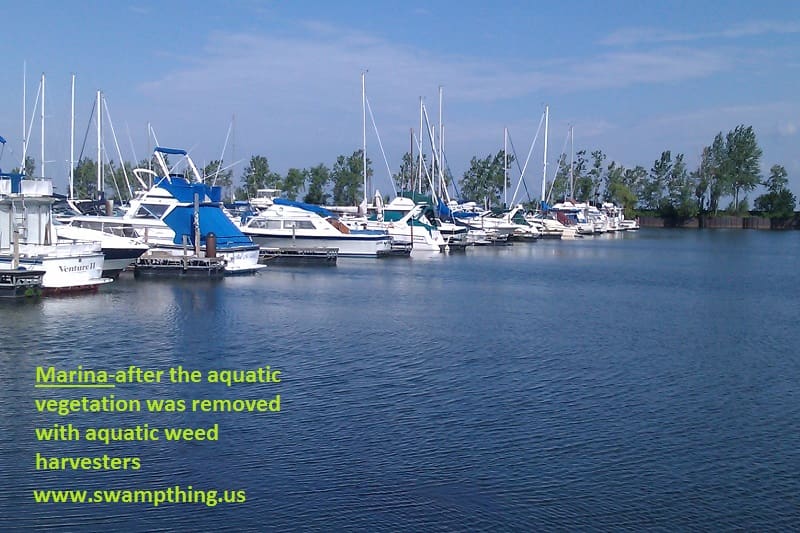
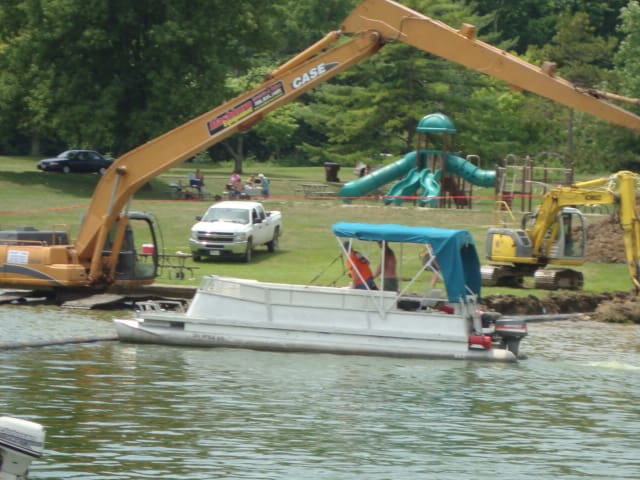
Use the Correct FERTILIZER on Your Lawn Lakefront
Turfgrasses maintained around lakes and ponds can be of great benefit to the water by providing a buffer zone for the filtration of runoff materials and protection against erosion and soil sedimentation. It is critical for turf managers to maintain waterfront areas with special care to prevent the maintenance activities from negatively impacting the water, which we hold in such high regard in Michigan.
A soil test is crucial on sites close to water to evaluate the phosphorus level. Phosphorus is a key contaminant of surface water and is usually the most limiting factor in aquatic weed growth. Most soils in Michigan have adequate phosphorus levels for supporting lawn turf.
Let's examine the classical Nitrogen - Phosphorus - Potassium (N-P-K) fertilizer mix for water impact. Nitrogen and phosphorous are the main factors in water quality issues, with phosphorus clearly the major concern. Potassium movement and impact are minimal and not considered a problem. Nitrogen is the most soluble and the most prone to leaching. It can enhance weed and algae growth, which has detrimental effects on the quality of the water. Phosphorous has the greatest impact on aquatic weed growth and is the most limiting nutrient in aquatic environments. The addition of phosphorous into these environments allows aquatic plants to take advantage of other elements. An MSU aquatic expert estimates that 1 pound of phosphorus could support 775 pounds of aquatic weed growth. Compared to nitrogen, phosphorus is not very soluble and gets bound tightly to the soil and thatch layers. It usually enters the water attached to the soil as a result of erosion.
Classical fertilizer mixes of N-P-K may be hard to justify around water because the soil phosphorous levels are most likely adequate. Test the soil routinely!!! If the phosphorous level is above 20 for the Bray P-1 test, there is no need to add more phosphorous.
Use a 5-10 foot buffer strip adjacent to the water to which minimal or no fertilizer is applied.
- Use a -0- phosphorous fertilizer (20-0-10) if P levels are adequate based on a soil test.
- Approximately 1–4 pounds of nitrogen per 1000 sq. ft. per year should be adequate in most areas.
- Use the lower nitrogen amounts for shaded areas.
- Use no more than ¾ pound/1000 sq. ft. of nitrogen per application.
- At least ¼ - 1/3 of the nitrogen should be in a slow-release form. These include the organic forms, sulfur-coated products, or IBDU.
- Don't begin spring application until 3 weeks after green-up.
- A general application sequence would be May, early July, September, and late October or November. For lower amounts, the July application could be eliminated.
If Phosphorus is Essential for All Plants and Animals, Why is It Bad for the Lake?
Phosphorus is an essential nutrient in a plant or animal’s growth. It is therefore needed by the plants and organisms that live in the Lake. The problem occurs when more phosphorus than those plants and organisms need ends up in the Lake, disturbing the delicate nutrient balance that exists. Phosphorus stimulates growth, so when too much of it ends up in the lake, some plants and algae grow too quickly and thickly. In turn, the overabundance of these plants then absorbs much of the oxygen and sunlight needed by fish and plants below the surface waters. Additionally, the ultimate decomposition of these plants creates a toxic environment for other organisms. As a result, the Lake's normal ecosystem is dramatically altered. In addition, algal blooms are also a major deterrent to human enjoyment of the Lake as the murky green, sometimes smelly water is less than inviting for swimming, fishing, and boating.
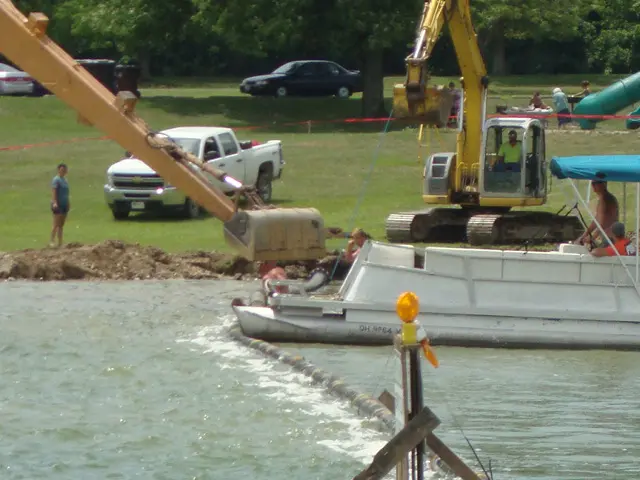

What Can I Do to Lower Lake Phosphorus Levels? There Are Many Things Individuals Can Do to Reduce Phosphorus in the Lake.
- Reduce or discontinue use of pesticides.
- Use phosphate-free dishwashing and laundry detergents.
- Clean up after your pets so that the waste does not run off directly into the lake untreated.
- Wash your car on grass rather than pavement, so the detergent can be filtered through the grass instead of running directly into the stormwater system and into the lake untreated.
- If you have a lawn, cut back on the amount of fertilizer you use. Cut only a third of the length of the grass with a sharp blade, leaving the cuttings to naturally fertilize the grass. If you must fertilize, use a low-phosphate fertilizer.
- If you live near or on the Lake, landscape your property with native plants that will provide a buffer between your lawn, garden, or road so as to filter out any pollutants including phosphorus before they reach the Lake. Roots are great filters. They also keep soil (which phosphorus likes to cling onto) in place.
Please remember Swampthing.us for all your needs for Aquatic Services and Aquatic Weed Control. Let us be your first choice in Lake Weed Control, Mechanical Weed Harvesting, Dredging, Pond Liners, Pond Aeration, and Diffusers, and complete Aquatic Weed Control of Lake Weeds
Email us: [email protected]
Phone: 1 (855) 305-0233